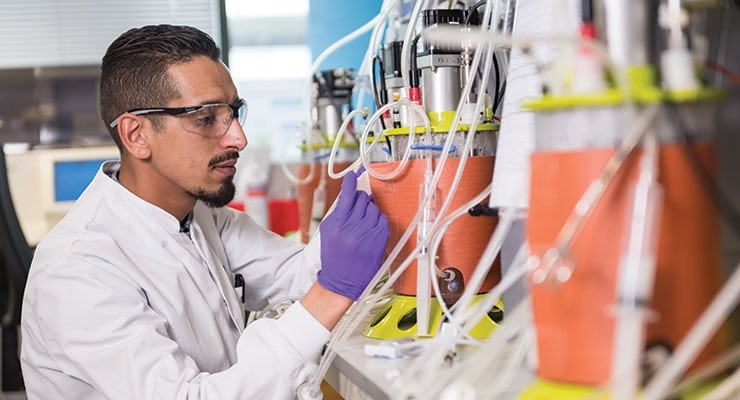I am a member of a CEO Life Sciences Roundtable and an expert in healthcare organization development, talent development, and talent management. Most of the others are CEOs of emerging, pre-IPO, life-science and biotech companies. The Roundtable allows these CEOs to share their prospects and challenges confidentially. One of the challenges we most often discuss is how to find that Perfect Person for a key position.
Let’s start with a typical scenario: LifeScience, Inc. is a start-up biotech going for Series A or B financing. Their targeted asset has several potential indications. They have a critical vacancy in a pivotal role. The kicker is, they need to fill the job quickly, because they want that Perfect Person to be part of their business plan and to attract the next round of funding.
Sound familiar?
In fact, I recently was speaking with the CEO of such a company. He had just filled a critical vacancy with someone recommended by a Board member. When asked how the new Person was doing, he answered: “He is a really strategic thinker, but he is too fast in making decisions. He doesn’t communicate well with the team, stays at a high level and doesn’t get down into the ranks.”
My prediction: He won’t last a year. Meanwhile the CEO is stuck with that Not-so-perfect Person in the job.
What went wrong?
Here are the most common mistakes that many life-sciences companies make, along with some advice I’d like to share with you.
- Vision
Mistake most often made: Thinking only about the here-and-now need.
Solution: Filling that critical position should not be ‘warm body’ time. As its CEO, what is your vision for the firm? What’s the culture you want to create? As the scientific/medical asset progresses from bench to clinical research, how do you plan to structure the company for growth? Changes will come fast. That Perfect Person must not only be able to be a leader who works extremely collaboratively with diverse functions and personnel. They also need to be able dive into the job at hand, be able to pivot at any moment, be somewhat entrepreneurial, and have a ‘miles-to-go mindset’ aligned with your longer-term vision and culture.1,2,3
- Define
Mistake most often made: No job description or, worse, using something taken off the internet.
Advice: Take time to write a realistic job description that will attract the kind of Perfect Person you want. Especially don’t cut and paste a job description off the internet posted by a big pharma company. Working for a start-up or smaller life science company is different. Do you need a strategic thinker who is willing to roll up the sleeves and be a good implementer? Say it! Need someone fast and flexible, used to working with minimal resources, where stock options will be given in lieu of salary and bonuses? Say that, too!
Then, think about the need to fill that critical position all over again!
Instead, consider using consultants who are a great fit for what you need. They also should have networks they can leverage for you. Consultants might be a perfect shorter team, lower-risk solution who can buy you time to find that Perfect Person later, after you get through that next round of financing.
- Recruit
Mistake most often made: Trying to save money by recruiting through your informal network.
Advice: The mistake is trying to do this yourself using ‘word of mouth’ to save costs. Hiring the Not-so-perfect Person costs you a lot more than a recruitment firm. Moreover, you’ll waste your own precious time trying to micromanage this. Let’s face it: is this really your strength?
On the other hand, do avoid the firms that ask for a big monthly retainer and other fees up front. You wouldn’t expect investors to pay big for empty promises, so why should you do that with recruiters?
I’m a big fan of smaller, specialized life-science search firms. I find them more agile and experienced looking for candidates better suited for a ‘roll up the sleeves’ jobs in cash-strapped life science start-ups. Many also are willing to work for a minimal monthly retainer with payment more on the back-end, based on success. What I really love about them? Their hunger and passion to help you find that Perfect Person. At the end of the day, isn’t that what you want? More importantly, you’ll learn a lot from those whom you interview and build more helpful networks for the future, even if you don’t hire them. So think about that life-science recruitment firm retainer fee as an investment, not a sunk cost.
- Assess
Mistake: Not taking enough time or taking too much time to assess a candidate.
Advice: Most founders of life science start-ups usually come from the bench and may not be financially- or people-savvy, but they usually are brilliant scientists. There are two traits I’ve observed in many of them. When it comes to their critical life-science asset, these CEOs will analyze the options for development to death. Yet when it comes to selecting top talents, they either overanalyze them, or go with their gut. If the former, by the time they make up their mind, the candidate often is no longer available. If the latter, here’s how that usually plays out: The CEO interviews the candidate. The interview goes very well. The CEO and the candidate ‘click’. A job offer is negotiated.
Should they hire that candidate right away. No. Here’s how to assess the ‘human’ asset more deeply and efficiently.
Start by developing three sets of questions: ‘Green’ questions to ascertain technical expertise, skills and knowledge; ‘Blue’ ones for traits, values, and behaviors; ‘Yellow’ ones for experience and judgment. For experience, ask for two examples of something they say they are good at. For judgment, ask visualizing questions: “What if …? How could we…?, How would you…?”. These will give you great insights into their ‘authenticity’ as well as how they are likely to think and behave going forward.
But don’t stop there!
The first round of interviews is usually for mutual information gathering. Do you and your team like what they are hearing? Does the candidate like what they are hearing? Can you both see yourselves working together? If so, repeat the process one more time.
Importantly, by the second round, their answers should have evolved. They should be describing how they can proactively help the company. Their ideas should be based on the information you shared in the first round of interview and subsequent investigation they have taken the initiative to do on their own. If you don’t see that happening, or if that second round discussion centers on their making compensation demands, shake hands and call it a day.4,5,6
Finally, life-science start-ups rarely can afford to hire a neophyte (nor should they). So do take the time to personally ask for and check references of your final candidates. Ask for examples of the kind of work the candidate did, and results. If the referral thought the candidate did a great job, they’ll tell you. If not, they’ll hold back. Their silence speaks volumes.
- On-board
Mistake: Expecting the new candidate to jump directly into the job with aplomb.
Solution:
Let’s face it, you’re a busy CEO. You don’t have time to hold the new Perfect Person’s hand. In your mind, you hired the right person with the right experience. It’s sink-or-swim time. And most likely you’ve thrown them into the deep end without a lifeline.
The Chinese have a saying, “The new broom sweeps best.” Studies show that how well a new person does in the first one to three months in the job is a harbinger of how they will do in that job thereafter.7,8,9 You owe it to your ‘new broom’ to help them get off to a great start. In fact, by the end of their first day, you want to them to come away saying to themselves (if not to you), “I had a great first day in the job, feel strongly that I will help make the company successful, and look forward to working with the team.” Full stop.
Then, for the next three months, guide them on what it takes to do well in the company. You shouldn’t need to mentor the Perfect Person (after all, they should be well qualified), but you do need to sponsor them. Give them opportunities to show what they can contribute to the team and company (and pitfalls to avoid). Provide ongoing feedback and ask them for their feedback not only to you, but to the team. This is particularly true in today’s new virtual world of team management, where it is even more important – and challenging – to feel connected.
If you have that Perfect Person, they’ll appreciate this ongoing support, be responsive to your feedback, and pay your investment in them back a thousand-fold in the coming months and years.








